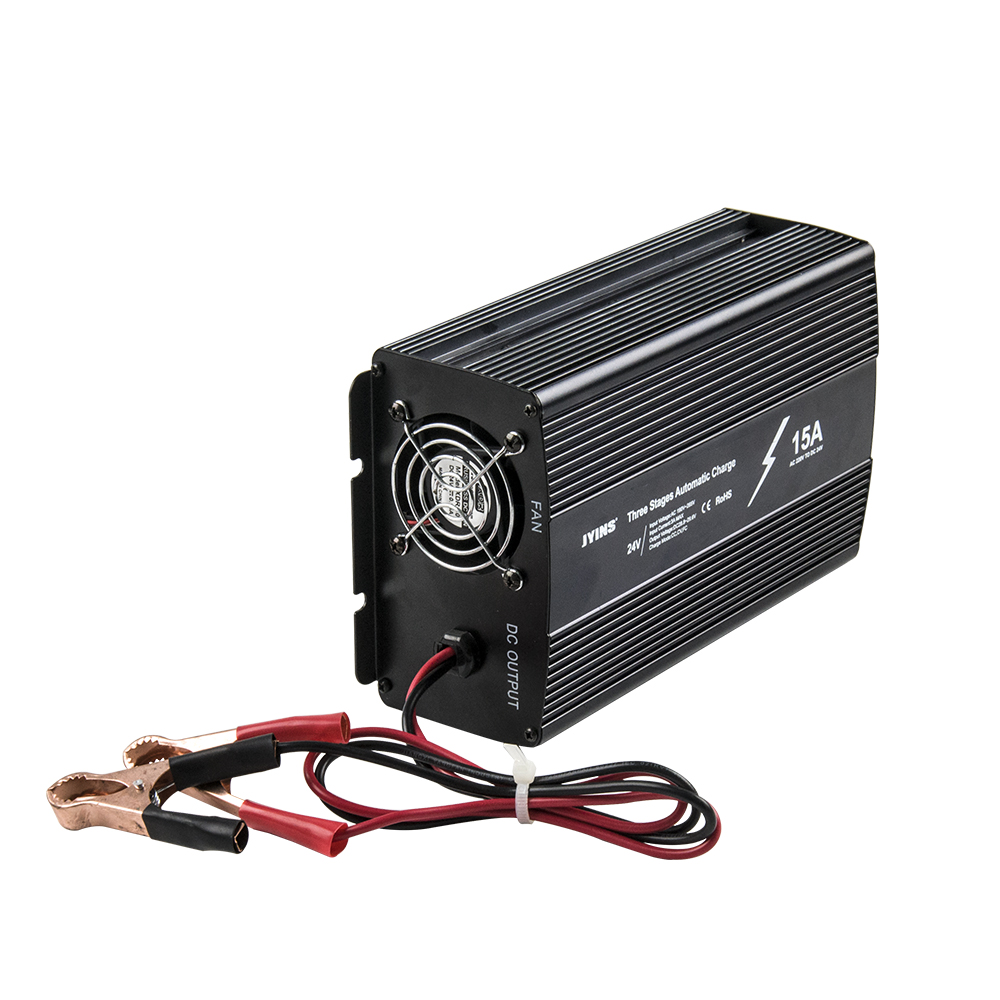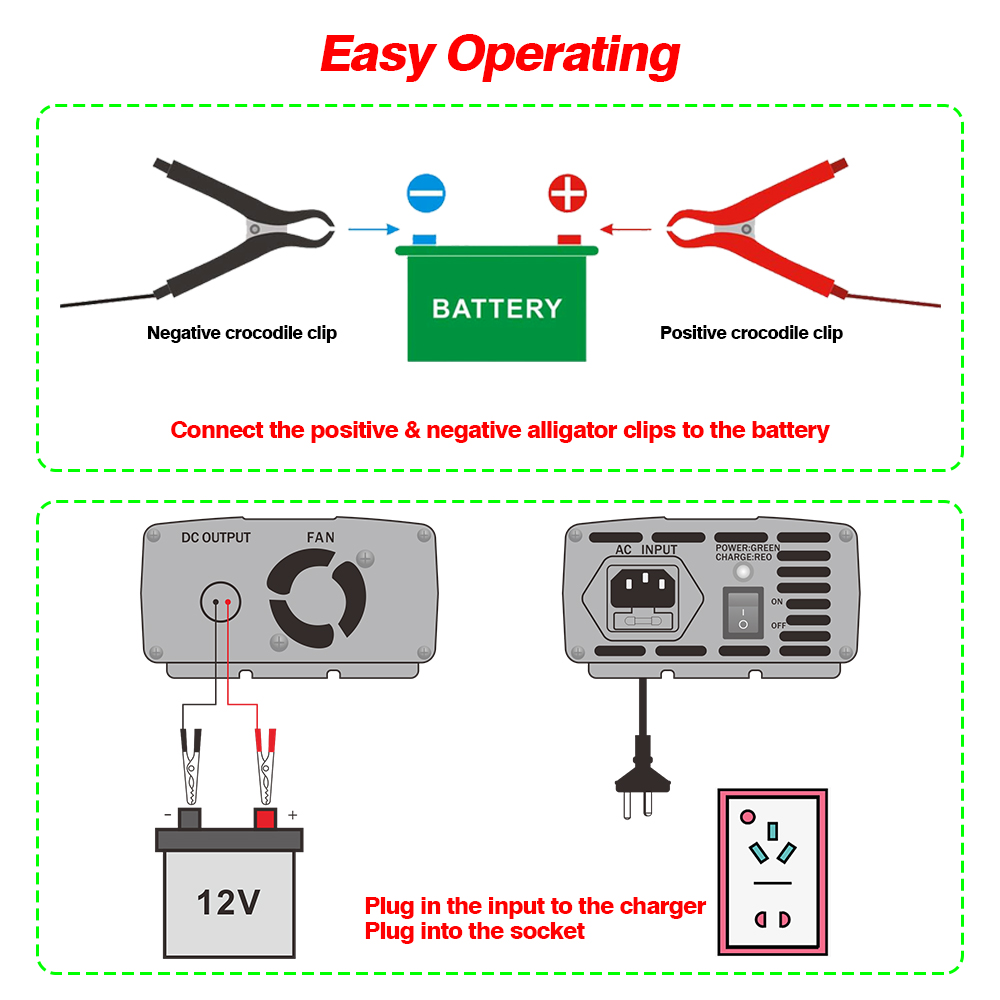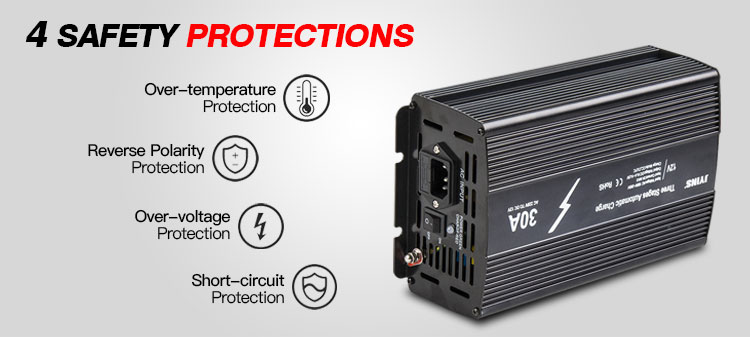Views: 0 Author: Site Editor Publish Time: 2025-07-15 Origin: Site










Have you ever wondered why your lithium-ion battery doesn't last as long as you'd like?
Proper charging is key to keeping your battery healthy and performing at its best. In this post, we’ll discuss the best practices for charging lithium-ion batteries, why it's essential for longevity, and how to choose the right charger for your needs. Keep reading to ensure your battery lasts longer and performs better!

Lithium-ion batteries are widely used in devices like smartphones, laptops, and electric vehicles. They store and release energy by moving lithium ions between the anode and cathode through an electrolyte. This process allows them to charge quickly and provide high energy output.
Anode: The negative side, where lithium ions are stored.
Cathode: The positive side, where ions flow to during discharge.
Electrolyte: The substance that allows ions to move between the anode and cathode.
High energy density: They pack a lot of power into a small, lightweight package.
Long lifespan: These batteries last longer than older types, like nickel-cadmium.
Low self-discharge rate: Lithium-ion batteries retain their charge for long periods when not in use.
No memory effect: Unlike other batteries, you can charge them at any percentage without affecting their capacity.
Charging lithium-ion batteries the wrong way can drastically shorten their lifespan. Poor charging habits, like overcharging or undercharging, can cause battery degradation over time. This reduces the battery’s ability to hold a charge, which impacts how well your device works.
Overcharging: Charging a battery past its maximum capacity can lead to overheating and damage.
Undercharging: Not charging enough can lead to the battery becoming unstable.
Extreme Temperatures: Charging in temperatures that are too hot or cold affects the internal components of the battery, reducing performance.
These practices stress the battery, causing it to degrade faster.
As batteries degrade, their capacity to store energy decreases. This means your devices won’t last as long on a single charge, requiring more frequent charging and possibly leading to malfunctions.
A Battery Management System (BMS) is key to ensuring safe and efficient charging. The BMS monitors the battery’s voltage, temperature, and current to prevent dangerous conditions, such as overcharging or overheating.
Preventing Overcharging: The BMS automatically cuts off charging when the battery reaches its optimal voltage level.
Preventing Overheating: It adjusts charging speed or shuts off power if the battery gets too hot.
Importance of Compatible Chargers: To ensure the BMS works properly, always use a charger designed for your device’s specific battery type.
Properly charging your lithium-ion battery is one of the most important factors in maintaining its longevity and performance. Whether you're charging your smartphone, laptop, or any other device powered by lithium-ion batteries, there are certain best practices to follow. By adhering to these guidelines, you can ensure that your device runs efficiently, stays powered longer, and avoids unnecessary degradation.

It’s crucial to use the correct charger designed specifically for your lithium-ion battery. Chargers are built with specific voltages, currents, and safety features that are matched to the device they power. Using the wrong charger can result in overcharging or undercharging, both of which can damage the battery over time.
Compatibility: Always make sure the charger matches the specifications required by your device. A charger that's too powerful may damage the battery, while one that's underpowered may lead to longer charging times and potential overheating.
Quality Matters: When purchasing a new charger, avoid cheap, off-brand products that don’t meet safety standards. These chargers may lack features like overcurrent protection, thermal regulation, or proper voltage regulation.
If you are unsure which charger is best suited for your device, feel free to reach out to the manufacturer for guidance. They can provide you with recommendations or help you find the right charger that guarantees your battery is charged safely.

The ideal charge range for lithium-ion batteries is between 20% and 80%. Although charging a lithium-ion battery to 100% may seem like the best way to maximize usage, it’s actually better for the battery’s health to avoid charging it all the way. Here’s why:
Why Partial Charging Is Better: Charging between 20-80% reduces the stress placed on the battery, helping it last longer. Every time you fully charge or discharge a lithium-ion battery, the chemical reactions inside the battery cause a small amount of wear. Partial charges create less wear on the battery and allow the battery to last longer over time.
Avoiding Full Charges: Keeping your battery at full charge for long periods can cause the battery’s internal components to degrade faster. Most devices don’t need to be charged to 100%, so it’s best to unplug your device once it’s within the 80% range.
Partial Discharges: On the flip side, fully discharging a battery to 0% is also damaging. Lithium-ion batteries rely on a balance between the energy stored and the energy used. Letting it discharge completely too often can reduce its lifespan and capacity.
If you don’t need your device to last for days on a single charge, aim for a sweet spot between 20% and 80% to get the most out of your battery’s life.
One of the most harmful things you can do to a lithium-ion battery is to either overcharge it or let it fully discharge. Here's why:
Overcharging: Charging your device beyond the recommended limit can cause the battery to overheat, which can result in swelling, leaks, or even dangerous chemical reactions. Overcharging consistently leads to the battery losing capacity much faster than if you kept it within the ideal charge range.
Undercharging and Full Discharges: Letting your battery reach 0% frequently can strain the battery’s internal chemistry, which reduces its ability to hold charge. Over time, this can lead to a significantly shorter lifespan. Modern lithium-ion batteries have built-in protection to prevent total discharge, but it’s still a good idea to avoid letting your device go all the way down to 0%.
Most modern devices are designed to cut off charging automatically once the battery reaches 100%. Still, it’s a good habit to unplug your device once it reaches 80-90% to prevent unnecessary stress on the battery. Similarly, avoid using the device until the battery is fully drained; charge it before it gets too low.
Temperature plays a critical role in the performance and lifespan of lithium-ion batteries. They operate best at moderate temperatures, specifically between 68-77°F (20-25°C). Charging or storing a battery in extreme conditions can damage its internal components and cause it to degrade more quickly.
Hot Conditions: Charging a battery in temperatures higher than 77°F (25°C) can cause the electrolyte inside the battery to break down. Overheating not only affects the battery’s efficiency but can also lead to safety risks, including leakage or even combustion in extreme cases.
Cold Conditions: On the other hand, charging lithium-ion batteries in temperatures below freezing can also lead to irreversible damage. The battery’s chemical reactions slow down in cold environments, which may lead to increased internal resistance and a permanent reduction in capacity.
To ensure your battery stays safe and works efficiently, try to charge it at room temperature and avoid charging it in direct sunlight or near heat sources. If you are storing your device or battery for an extended period, keep it in a cool, dry place to preserve its health.
If you're not using your device for a while, or if you have spare lithium-ion batteries, proper storage is essential to maintain battery health. Improper storage can significantly shorten the lifespan of your battery.
40-50% Charge for Storage: When storing your lithium-ion battery, it’s best to leave it at around 40-50% of its full charge. Storing a battery at 100% charge can cause it to degrade faster, while leaving it empty for long periods can cause the battery to fail altogether.
Temperature Considerations: Just like when charging, temperature is key when storing a battery. Avoid placing your device in extreme temperatures, either hot or cold. The ideal storage temperature is usually between 32°F and 50°F (0-10°C).
Periodic Charging: Even while in storage, it’s a good idea to check on your battery every few months and recharge it if necessary to maintain the 40-50% charge level.
Proper storage prevents long-term damage and helps your battery last longer, ensuring it's ready to use when you need it.
Choosing the right charger for your lithium-ion battery is essential for keeping your devices running smoothly and extending the battery's life. A good charger not only helps your battery charge quickly but also prevents damage over time. Here’s how to find the best charger for your needs.
When selecting a charger, make sure it has the features that protect your battery and ensure fast, safe charging. Here are key features to look for:
Overcharge Protection: This feature prevents the battery from being charged beyond its safe capacity. It helps prevent overheating, which can cause permanent damage.
Thermal Regulation: A good charger will have built-in mechanisms to monitor and regulate the temperature during charging, ensuring it doesn’t overheat.
Safety Features: Look for chargers that offer protection against overcurrent and short circuits to keep your device and battery safe from electrical faults.
Another important factor is compatibility. Make sure the charger works with your specific lithium-ion battery type and size. Some chargers are designed for multiple battery types, so check the voltage and amperage to ensure a perfect match for your device.
Choosing the right charger for your device involves understanding the battery's needs. Here’s what to consider:
Voltage: The charger’s voltage should match the battery’s required voltage. Too high or too low can damage the battery.
Current: The current rating of the charger determines how quickly the battery charges. Choose one that matches your device's battery specifications to prevent overheating.
Battery Size: Larger batteries need chargers that can handle a higher current without damaging the battery. Make sure your charger matches the battery's capacity.
It’s always best to buy a charger from a reputable manufacturer. Well-known brands ensure their chargers meet safety standards and are built to last. They also offer customer support if you ever need assistance. Investing in a reliable charger from a trusted company can give you peace of mind that your battery is in good hands.
If your battery isn't charging, check these common causes:
Faulty Charging Cable or Adapter: Inspect for damage and try a different cable.
Dirty Charging Port: Clean the port with a soft brush or compressed air.
Battery/Device Issue: An aging battery or device may not charge well. Try a reset or software update.
If these don't fix it, the battery might need replacing.
If your charger isn’t working, try these steps:
Faulty Charger: Make sure it’s properly plugged in. If it’s not lighting up, it could be defective.
Power Source Issue: Test a different outlet or USB port.
Overheating: Let the charger cool down if it's too hot.
Still not working? Consider replacing the charger.
When a battery drains quickly, it might be worn out:
Battery Wear: Lithium-ion batteries degrade over time. If it’s old, replacement may be needed.
Charging Habits: Avoid overcharging or discharging to 0% frequently.
Check if your battery is under warranty for a replacement.
Overheating can damage your device and battery. Prevent it with these tips:
Use Chargers with Safety Features: Choose chargers with thermal regulation and overcharge protection.
Avoid Hot Environments: Charge in a cool area, away from sunlight or heat sources.
Remove Protective Cases: Cases can trap heat, so remove them while charging.
To ensure your lithium-ion battery lasts longer, always follow the best charging practices. Use the correct charger, avoid overcharging, and maintain a proper charge level. This will keep your battery efficient and safe.
For optimal performance, contact the manufacturer today and get a premium Lithium Battery Charger.
A: Lithium-ion batteries should be charged to a maximum of 4.2V per cell. Charging beyond this can cause instability and safety risks .
A: No, lithium-ion batteries require chargers specifically designed for their voltage range. Using an incompatible charger can damage the battery .
A: To revive a "dead" lithium battery, you can use a low-current charger or solar energy, ensuring the voltage is above 3.25V .